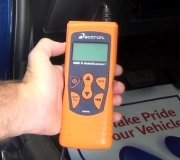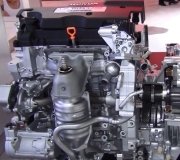Actually there is no way to remove it, its integrated into the lower intake manifold and is commanded by the ECM. The cylinder deactivation system uses an electro-hydraulic actuator device called the valve lifter oil manifold (VLOM) assembly. The VLOM is bolted to the top of the engine valley, below the intake manifold assembly. The VLOM consists of 4 electrically operated normally closed solenoids. Each solenoid controls the application of engine oil pressure to the intake and exhaust valve lifters on the cylinders selected to deactivate. Engine oil pressure is routed to the VLOM assembly from an internal oil passage on the rear of the cylinder block.
All 4 VLOM solenoids are connected in parallel to a fused ignition 1 voltage circuit, supplied by the powertrain relay. The ground or control circuit for each solenoid is connected to a low side driver internal to the engine control module (ECM).
When all enabling conditions are met for cylinder deactivation, the ECM will ground each solenoid control circuit in firing order sequence, allowing current to flow through the solenoid windings. With the coil windings energized, the solenoid valve opens, redirecting engine oil pressure through the VLOM into 8 separate vertical passages in the engine lifter valley. The 8 vertical passages, 2 per cylinder, are connected to the valve lifter bores of the cylinders to be deactivated. When vehicle-operating conditions require a return to V8 mode, the ECM will turn OFF the control circuit for the solenoids, allowing the solenoid valves to close. With the solenoid valves closed, engine oil pressure in the control ports is exhausted through the body of the solenoids into the engine block lifter valley. The housing of the VLOM incorporates several bleeds in the oil passages to purge any air trapped in the VLOM or engine block.
SPONSORED LINKS
Sunday, August 2nd, 2009 AT 12:08 PM




